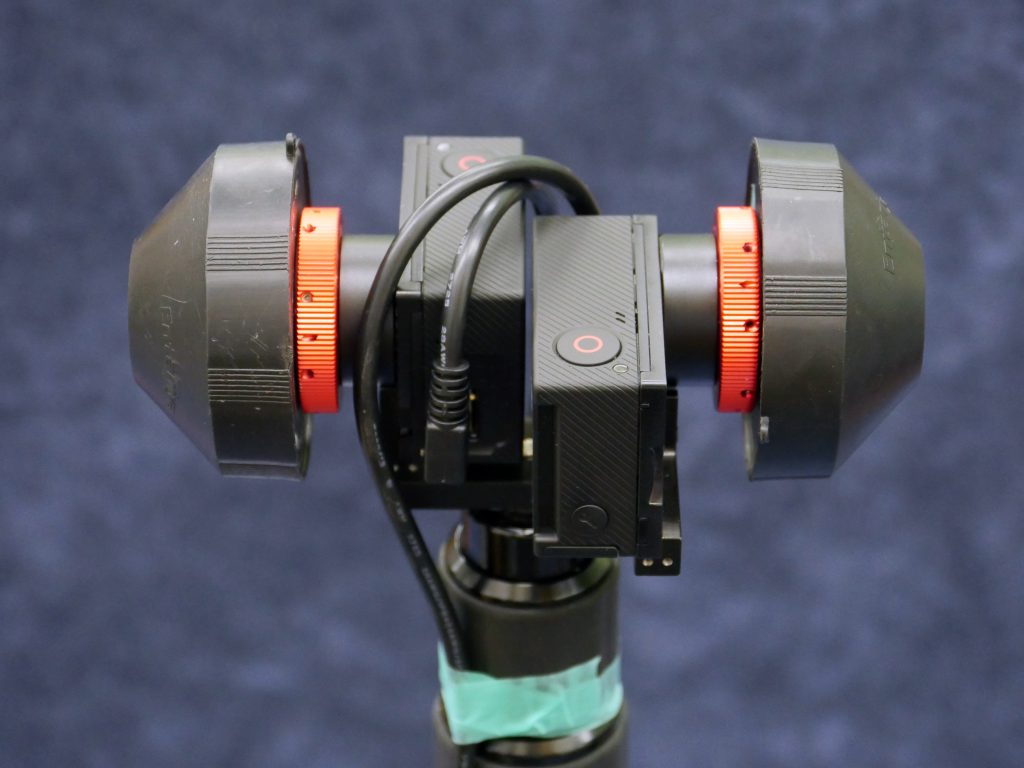

Wrap the threading on your 185-degree lenses with thread seal tape.
AUTOPANO VIDEO 2 PRO
To be clear, Autopano Video 2 / Autopano Video Pro 2 works in conjunction with Autopano Pro 4 / Autopano Giga 4.
AUTOPANO VIDEO 2 PLUS
Shapeways quoted us $66.15 plus shipping to print the dual GoPro mount.Īutopano Video 2 ( $326) or Autopano Video Pro 2 ( $653)Īutopano Pro 4 ( $109) or Autopano Giga 4 ( $217) Send the file out to a service - there are dozens. If you don’t have a 3D printer:Ĭheck with your local library or maker space.

One DJI Phantom 2 GoPro Mounting Bracket ( $12)Īccess to a 3D printer with enough filament to print the camera mount (on a MakerGear M2 this mount required 38.2 meters of 1.75mm filament). One Kyosho Z8006 Zeal Vibration Absorption Sheet ( $14.94)Įight ½-inch long by ⅛-inch diameter nylon spacers

One DJI Phantom 2 drone system ( $499.99) White thread seal tape (aka plumbers tape) ($2) One GoPro Mini USB to RCA Composite Cable ( $13.99) so you can focus your new lenses on a television - video quality on the GoPro app is not great and makes focusing harder. Note: The URL and page title incorrectly state the lens is 180 degrees. Two M12 185-degree lenses ( $89/lens) to replace the stock lenses in the GoPros. It is only compatible with the GoPro Hero 3+ Black (there is no Dual Hero System for the GoPro Hero 4). One Dual Hero System ( $199.99) to sync the frame rates of the two GoPros. Two GoPro 3+ Black Cameras ( $357.99/camera) - unlike other third- or fourth-generation GoPros the 3+ Black is compatible with the Dual Hero System. As a bonus, the GoPro’s video out capability also enables first-person view video for piloting. My solution: a camera rig consisting of two GoPro 3+ Black cameras with aftermarket 185-degree field-of-view lenses. I wanted to build a 360-degree video camera rig that is low cost, is light enough to mount on the ubiquitous DJI Phantom 2 drone, and has good video quality. Or, you can mount six GoPro cameras in a ball-like configuration to create a 360-degree view, but you are still going to have to shell out $2,000 to $3,000 just for the cameras, and only large multi-rotor drones can carry their weight. If you have $15,000 to spend and happen to be near a YouTube Space, Google’s Jump VR camera system can shoot 360-degree footage, but at 15 pounds it weighs too much for most drones. There are a few consumer 360-degree cameras currently on the market - Ricoh's sets two 180-degree lenses back-to-back on their Theta M15, and VSN's Mobil V.360 uses one lens and a mirror - but both have poor image quality. The immersive experience is especially fun on mobile devices, which translate physical movements of your phone or tablet into onscreen exploration of the 360-degree environment. When we try this option, the stitched image with the seams offset is very different (the bigger offset the more different the images, and the difference could not be removed by any affine transform) from the image stitched with the default seam.Videos captured with 360-degree camera systems allow viewers to pan around and explore recorded scenes. In your document describing this feature( ), you show the image of a man on a bike, where option “seam_offset” shifts the seam but do not violate the alignment. Please, could we indicate where is the problem? Maybe for 5-camera case we need to do a kind of preprocessing?Ī while ago we sent you a letter related to your option “moving seams” for nvss_sample. So, the results of calibration look absolutely unreliable. Then we stitch our frames using your application nvss_sample, and get proper stitching for many frames.įor 5-cameras Sony rig, we reached even higher quality of 0.94-0.946, but the calibration parameters jumps from one good calibrated frame to another. For Titan 8-cameras rig, we have reached the calibration quality of 0.93, and we see that for different frames with a good calibration of 0.92-0.93, we get close parameters in the calibration file. We use version of 2.1 for Windows.įor calibration of our camera rigs, we use your application nvcalib_sample, filling in preliminary with our data files image_input.xml and rig_spec.xml. The results were highly impressive, so we decided to switch to your tool. But when we learnt about VRWorks 360 and tried it. For a long time, we used for stitching AutoPano. We shoot videos with 5-cameras or 8-cameras rigs and stitch them into 360 degrees panoramic video. Our company is working in area of virtual reality.


 0 kommentar(er)
0 kommentar(er)
